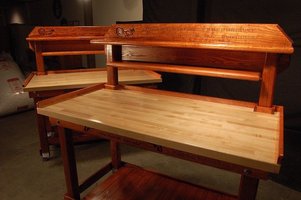I know we have the reloading bench photos. I wanted to know what you think and how you think the optimal bench setup would be.looks like I will be acquiring some real estate in the basement and wanted to try to do it right. Possibly a 10x14 space will be dedicated for reloading. Nothing in the way ready to be built/designed. Any ideas?????
Sent from my iPhone using Tapatalk
Sent from my iPhone using Tapatalk


![Jihad [jihad] [jihad]](/xen/styles/default/xenforo/smilies.vb/039.gif)